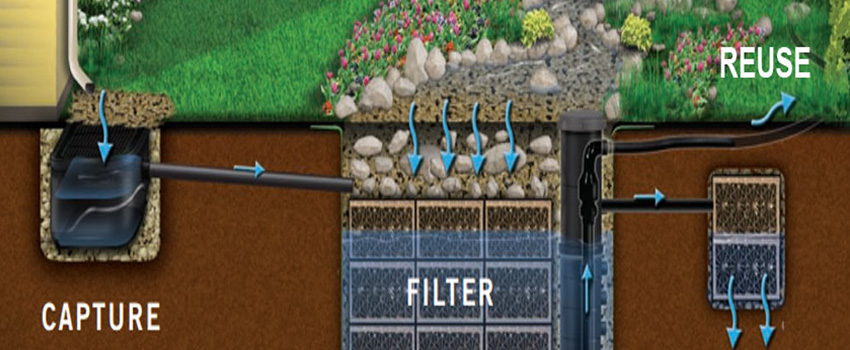Based on the soil strata available on the ares suitale method of recharge well / pit/ well structure was designed and implemented to augment the ground water potential of the area.
RAINWATER HARVESTING is a process involving collection and storage of rain water (with the help of artificially designed system) that runs off natural or man-made catchment areas e.g. roof top, compounds, rock surface or hill slopes or artificially repaired impervious/semi-pervious land surface. Undoubtedly a number of factors contribute to the amount of water harvested e.g. the frequency and the quantity of rainfall, catchments characteristics, water demands and the quantum of runoff, and above all speed and ease with which the rainwater percolates through the subsoil to recharge the ground water.
Pits :- Recharge pits are constructed for recharging the shallow aquifer. These are constructed 1 to 2 m, wide and to 3 m. deep which are back filled with boulders, gravels, coarse sand.
Trenches:- These are constructed when the permeable stram is available at shallow depth. Trench may be 0.5 to 1 m. wide, 1 to 1.5m. deep and 10 to 20 m. long depending up availability of water. These are back filled with filter. materials. Dug wells:- Existing dug wells may be utilised as recharge structure and water should pass through filter media before putting into dug well.
Hand pumps :- The existing hand pumps may be used for recharging the shallow/deep aquifers, if the availability of water is limited. Water should pass through filter media before diverting it into hand pumps.
Recharge wells :- Recharge wells of 100 to 300 mm. diameter are generally constructed for recharging the deeper aquifers and water is passed through filter media to avoid choking of recharge wells.
Recharge Shafts :- For recharging the shallow aquifer which are located below clayey surface, recharge shafts of 0.5 to 3 m. diameter and 10 to 15 m. deep are constructed and back filled with boulders, gravels & coarse sand.
Lateral shafts with bore wells :- For recharging the upper as well as deeper aquifers lateral shafts of 1.5 to 2 m. wide & 10 to 30 m. long depending upon availability of water with one or two bore wells are constructed. The lateral shafts is back filled with boulders, gravels & coarse sand.
Spreading techniques :- When permeable strata starts from top then this technique is used. Spread the water in streams/Nalas by making check dams, nala bunds, cement plugs, gabion structures or a percolation pond may be constructed.















